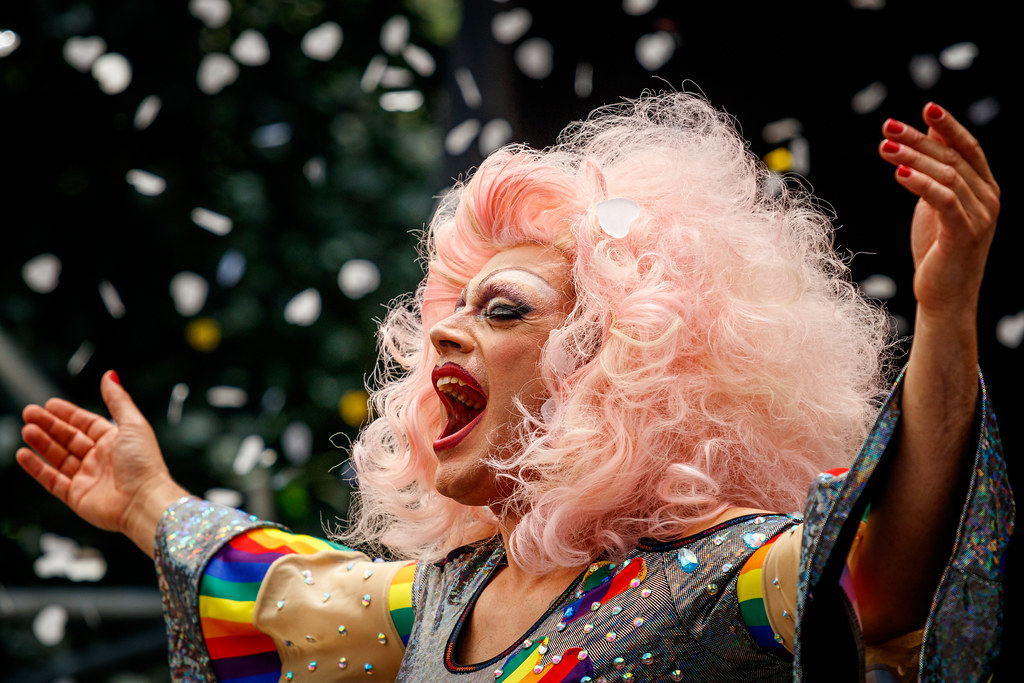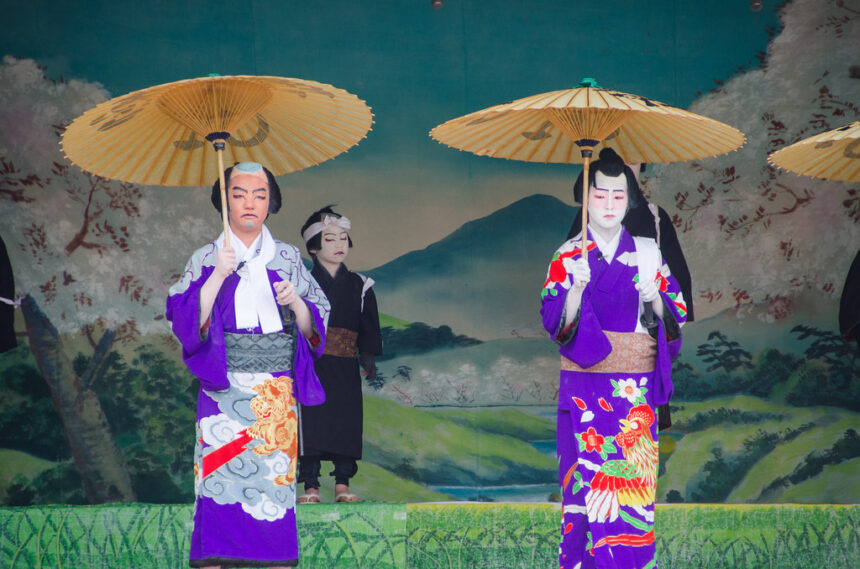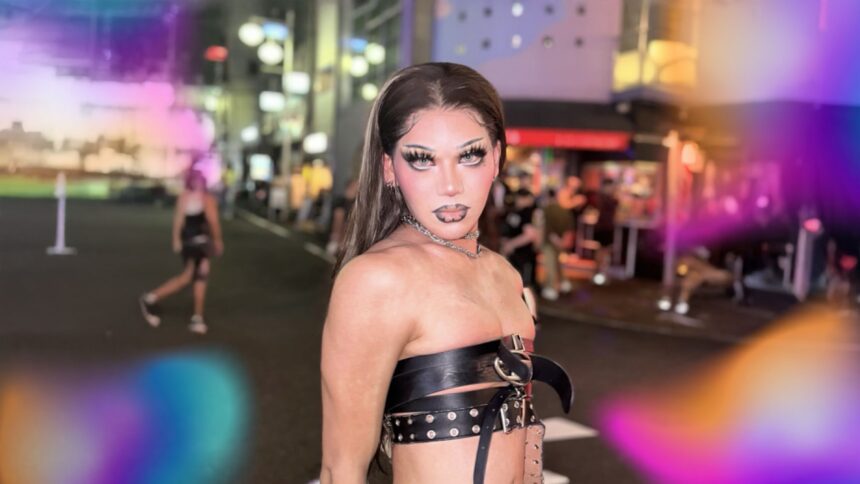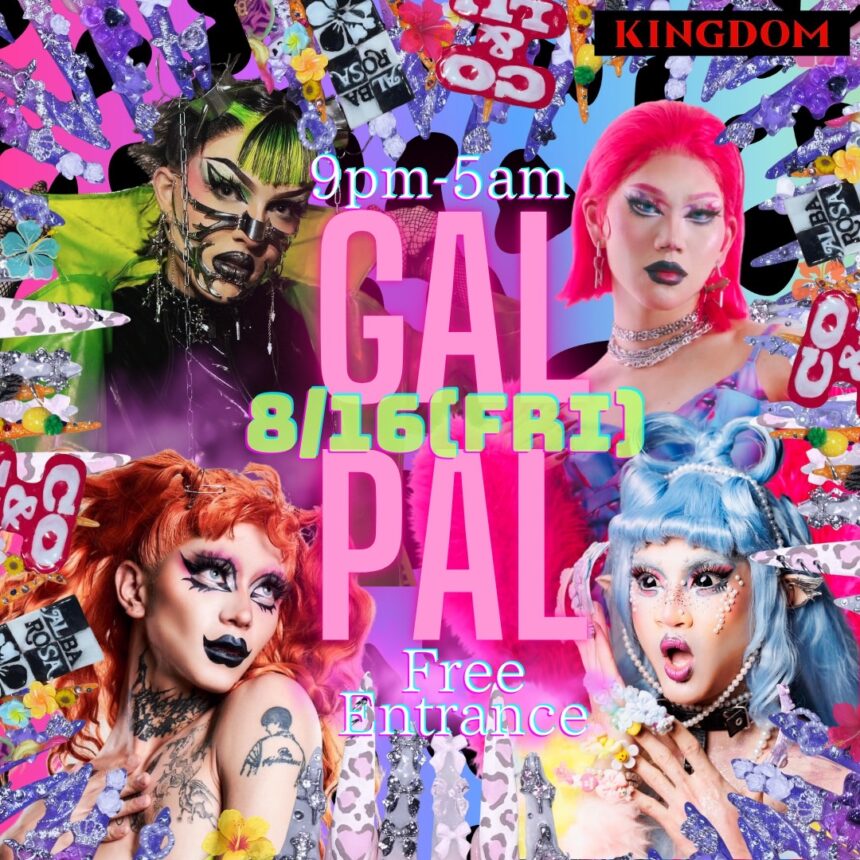Does Drag Culture Exist in Japan?
Like almost every other country, drag culture exists in Japan, and is mainly concentrated around major cities like Tokyo and Osaka. In bustling LGBTQ+ districts like Tokyo’s Shinjuku Nichome, there are a variety of options to choose from if you want to experience Japan’s drag culture.
There are bars where you can have personal chats with drag queens, flashy drag shows with loud music and outrageous fashion, and more eclectic cabaret shows that host an assortment of performers such as drag queens, drag kings, musicians and dancers! It’s all about what you’re looking for, and if you’re in a major Japanese city in search of drag performances, chances are you’ll find one.
Our Favorite Drag Queens in Japan
Japan is home to a variety of performing drag queens. All of these queens are artists in their own right, who have their own fashion, makeup, hairstyles, talents, and unique mannerisms. Since drag is an open-sourced, highly flexible artform, you’ll be certain to find many queens who have their own specific expression of drag!
The popularity of drag queens in Japan goes all the way back to the 50s with Akihiro Miwa, and continues on to this day with staples of the Tokyo drag scene such as Goma Dango and Shigata Ichikuchi, and newcomers like the young twenty-something Okini.
If you want to learn even more about these queens and more broadly about drag culture in Japan, check these articles out!
History of Drag Culture in Japan

There is some debate about how drag culture in Japan got started. But, from what I can see, it mostly became popular here for these reasons.
Kabuki Culture and Crossdressing
One of the ways crossdressing came to be in Japan before major Western influence was through Kabuki theater. In 1629, the Edo Shogunate banned female performers from this flashy and dramatic artform out of fear that they would tempt men too much. So, to replace women, male performers had to dress up in women’s clothing and makeup to play female roles. This inconvenient rule, however, did lead to crossdressing becoming familiar amongst Japanese people, so it wasn’t that big of a leap for the Japanese to accept drag culture.
Western Drag’s Influence
With multi-season shows such as RuPaul’s Drag Race becoming a global phenomenon, Japan, like many other countries, became interested in drag culture and developed their own version of it. Voguing, which began in the mid to late 20th century in America, developed into today’s drag shows and tournaments where a queen or king dresses up in flashy attire, plays a certain character, and performs for the audience. This style of drag show is now easy to find in Japan’s big cities. One of the most popular shows in Japan today is Opulence, a well-known annual drag show held in Tokyo and Osaka.
Advent of the Internet
One of the biggest driving factors of drag becoming popular in Japan, and a uniquely Japanese drag style being developed, is the internet and social media. Since so much of queer culture is based around everyday people thinking of something, posting it, and it going viral, it makes sense that some of the drag trends that reached every corner of the world, including Japan, began on social media.
Japanese drag queens also often advertise themselves and their personal style through Instagram. Queens like Okini and Goma Dango have popular Instagram pages where they show off their latest fashion and makeup looks and give the dates for their upcoming shows.
Interview With a Drag Queen

Okini is a Tokyo-based drag queen originally from rural Hiroshima. She began doing drag about six years ago when she was only 18! Now 24 years old and performing at popular clubs in Tokyo, she’s a pretty young queen compared to other famous queens we’ve mentioned. But, she’s already amassed quite a following, and has become a drag queen Japan is lucky to have!
Known for her gender non-conforming fashion and makeup, she adds a bit of an alternative vibe to a medium usually cloaked in bright makeup and frills. In fact, Okini makes most of her clothes herself, and is accepting commissions to make clothes for anyone who wants to buy them, but she won’t advertise this on her Instagram.
Below, we’ll give you the highlights of an interview with Okini that we did at JGG, so you can get a sense of what life is like for a drag queen in Tokyo!
How Is Life as a Drag Queen in Japan?
According to Okini, life as a drag queen in Japan is pretty good. She says that she’s thankful for the many drag opportunities that she gets in Tokyo, and that she’s happy that there’s such a vibrant drag community in the city. She’s also thankful that doing drag has given her the chance to design her own clothes, and to experiment with fashion in ways that would otherwise be hard to do.
Although one might think that life as a drag queen in Japan could be tough due to the country’s often conservative nature, according to Okini, she hasn’t run into any major problems when it comes to discrimination due to her craft, which is good to hear!
How Is Japan’s Drag Culture Different From Other Countries?
Okini says that one unique point about drag in Japan is that Japanese drag queens often act as “hostesses”. Hostess bars in Japan are bars where pretty women talk to customers while serving them drinks, and, unlike other countries where drag shows are usually larger, louder events, Japan has a fair amount of drag bars where you can talk to a drag queen in more of a chill atmosphere. There’s no loud music or crowds, and it’s basically like a regular bar, except drag queens work there as a form of hostess.
Another thing unique to Japanese drag culture is that it’s often funnier than other countries’ drag shows, and incorporates comedy into its acts along with other elements. No drag show is only about fashion – it’s also about charisma and about putting on a show. In Japan, these shows can often have a less intimidating atmosphere that everyone can enjoy.
What About Japan’s Drag Culture Can Be Further Improved?
According to Okini, one thing she notices about drag culture is that, like any hobby or subculture, it can become cliquey. She encourages those getting into drag to think about building community outside of just a few people, and to reach out to newcomers to make them feel welcome.
She also wants people to be legitimately interested in drag and LGBTQ+ culture, and not just to use it as an Instagram trend to get more likes. Since people sometimes make queer friends just to say they have queer friends, she wants to make sure that people see both drag queens and LGBTQ+ people for who they are, and not just for their identity or hobby.
Conclusion
Japanese drag culture is largely influenced by Western drag, while also maintaining its own unique elements such as more personal drag bars in Shinjuku Nichome. With many drag queens in Japan such as Okini springing up and working to get their name out there, there is no absence of new and exciting fashion, music, art, and experiences when it comes to Japanese drag!



